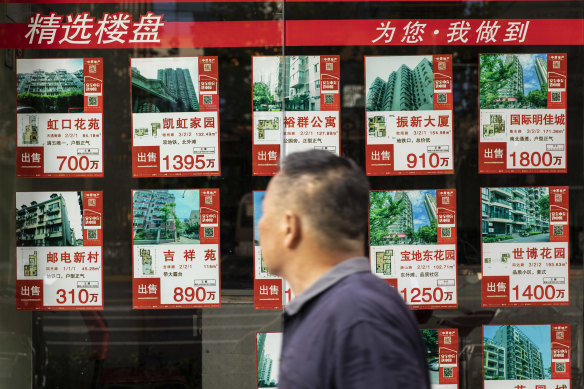
Banks, probably the smaller regional banks, would be left with major mark-to-market losses and capital shortfalls.
That would be akin to what occurred in the US and which caused a number of smaller banks, including the high-profile Silicon Valley Bank, to fail. Silicon Valley was the biggest bank failure in the US since the global financial crisis in 2008.
Chinese insurers, which offer fixed returns, would also have their capital adequacy stressed.
The risk the authorities perceive in the bond market is, therefore, a threat to systemic stability that could produce a major domestic financial crisis.
In recent weeks, volumes of trading in longer-dated bonds have collapsed to a fraction of their levels at the start of this month after the authorities began warning of “illegal” speculative trading.
It would not be in China’s interest for bond market activity to simply dry up completely – that would itself have very significant implications for bank and systemic stability, given the key role that bond markets play within financial systems.
The PBOC is fighting a battle it can’t win in the market unless it, and the economic policymakers in Beijing, can find a way to win in the real economy.
It might appear a paradox that the authorities are striving to drive up bond yields even as the PBOC has been reducing its policy rates – although those are short term – in a bid to stimulate lending and economic activity.
However, this paradox highlights the source of the problem.
The collapse of China’s property market – the implosion of an earlier bubble – in which prices continue to fall, has had a chilling effect on consumer and business confidence and China’s economic growth, and particularly activity within the domestic economy, which has essentially stalled.
That’s been reflected in a flat-lining inflation rate, factory gate prices that have been falling for nearly two years and fears of deflation.
Loading
Consumers are wary and risk-averse, their spending is weak and, where once their savings might have gone into the property market, they are now hoarding them.
With China’s businesses also cautious, demand for credit is low. Last month bank borrowers repaid more than China’s banks lent for the first time in nearly two decades. There is a lot of liquidity swirling around the system and few options for it to find a safe place to rest.
The property market, until it has clearly stabilised, is not one of them and may not be for some years, given the surplus of housing stock and a declining population.
China’s stock market, which has fallen for the past three years, is down another 3.7 per cent year-to-date.
That leaves the obvious haven – for households, businesses and banks – of the government bond market. The liquidity has to go somewhere and, if China’s banks are to cope with the inflows of deposits from households and businesses against the backdrop of weak demand for credit, the bond market is the only place to which they can safely turn.

China’s property meltdown continues to reverberate through the country’s economy. Credit: Bloomberg
The banks could try to reduce the flow of funds they are receiving by lowering their deposit rates, but that wouldn’t address the liquidity sloshing around but simply shift it somewhere else.
The risk for the PBOC and Beijing is that if they crack down too severely on the flow of funds into the banks and then into the longer-dated bonds, they will divert that liquidity into higher-risk assets and effectively force the bubble in the bond market into other asset classes.
Loading
Banks would obviously prefer to lend rather than put their excess liquidity into low-returning bonds, so the solution to the conundrum facing the authorities is obvious. They need to aggressively stimulate economic growth and the demand for credit to divert liquidity into more productive and less systemically challenging areas.
Beijing has, however, consistently rejected pressure to embark on large-scale stimulus to try to boost consumption, instead concentrating on an export-led growth strategy under which exports have grown to the extent that they are sparking pushback from those economies on the receiving end.
Yet even though the volume of those exports might have grown, their value hasn’t kept pace. That seems to be a function of depressed domestic demand and consequent over-capacity within China’s factories.
The PBOC is fighting a battle it can’t win in the market unless it, and the economic policymakers in Beijing, can find a way to win in the real economy. It is fighting a symptom of the underlying problem – slowing growth in the real economy – rather than the cause.
The Market Recap newsletter is a wrap of the day’s trading. Get it each weekday afternoon.









 Add Category
Add Category